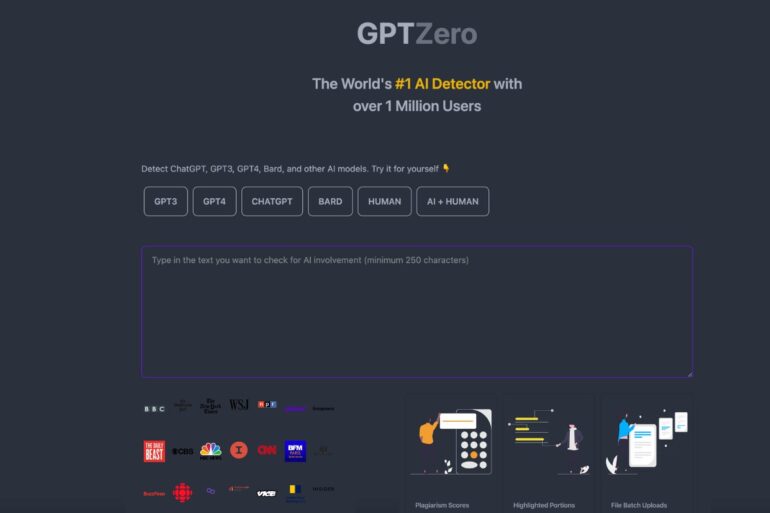TL;DR:
- Edward Tian’s AI detection start-up, GPTZero, has gained popularity for its ability to detect AI-generated text.
- GPTZero has evolved significantly since its initial release, introducing new features and APIs to enhance its capabilities.
- Concerns about false positives in AI detection are addressed through the development of features that help students prove the authenticity of their work.
- GPTZero’s success has attracted interest from researchers and universities, positioning it as a leading AI detection model.
- The software’s emphasis on transparency, authenticity, and deep learning algorithms makes it a revolutionary tool in the fight against misinformation.
- GPTZero aims to be not just a detection platform but the writing platform of the future, embracing the positive impact of AI in education.
Main AI News:
Princeton graduate, Edward Tian ’23, has taken the academic world by storm with his innovative AI detection start-up, GPTZero. What began as a senior thesis project has evolved into cutting-edge software designed to detect AI-generated text. Since its initial release, GPTZero has seen significant advancements, addressing concerns about false positives and revolutionizing the way plagiarism is detected.
After witnessing the widespread popularity of the first version of GPTZero, Tian decided to establish a start-up bearing the same name. Now fully devoted to his venture, he leads a team of twelve staff members and recently welcomed two interns from Princeton University. A preprint study on AI detectors confirmed GPTZero’s superiority in detecting AI-generated text compared to other competitors.
However, the study also revealed the susceptibility of AI detectors to false positives, potentially leading to undeserved consequences for students. To combat this issue, GPTZero is focusing on developing a feature that allows students to track their writing process and prove the absence of AI usage.
Tian’s vision for GPTZero goes beyond plagiarism detection. He aims to create software that not only identifies instances of AI-abetted plagiarism but also provides authentication for the originality of human-written text. The software’s first version assessed perplexity and burstiness in sentences, but GPTZeroX, the updated version released two weeks later, introduced new features like highlighting phrases and sentences with a high probability of AI generation.
In February, GPTZero’s API was launched, making the software more accessible to a broader audience, including several renowned universities. The software’s capabilities have attracted researchers from prestigious institutions like Stanford, Harvard, and Berkeley, validating GPTZero as one of the most accurate AI detection models available.
One challenge faced by AI detection software is its potential biases against ESL writers. To address this concern, Tian and his team have been dedicated to helping students prove that their work is not AI-generated. GPTZero’s v2 API includes a “human authentication” feature, enabling users to document their writing process through video format, ensuring transparency and authenticity.
Tripp Jones, a general partner at venture capital firm Uncork Capital, has lauded GPTZero as a groundbreaking tool in the fight against misinformation perpetuated by generative AI technology. With constant updates and improvements, GPTZero maintains its accuracy and efficiency, utilizing deep learning algorithms and large datasets to optimize plagiarism detection.
Tian envisions GPTZero not merely as a detection platform but as the writing platform of the future. As AI continues to shape the educational landscape, GPTZero aims to empower students and educators alike, fostering transparency and embracing the positive impact of AI technology in the academic realm.
Conclusion:
GPTZero’s rise as a pioneering AI detection software marks a significant shift in the market. Its ability to combat false positives and promote transparency is likely to resonate well with educators, institutions, and researchers seeking reliable plagiarism detection solutions. As the software continues to evolve, its integration into the educational landscape could have a transformative effect, paving the way for a future where AI enhances, rather than hinders, the writing process. Businesses operating in the AI detection space should take note of GPTZero’s success and consider similar approaches that prioritize accuracy, accessibility, and the human element.

